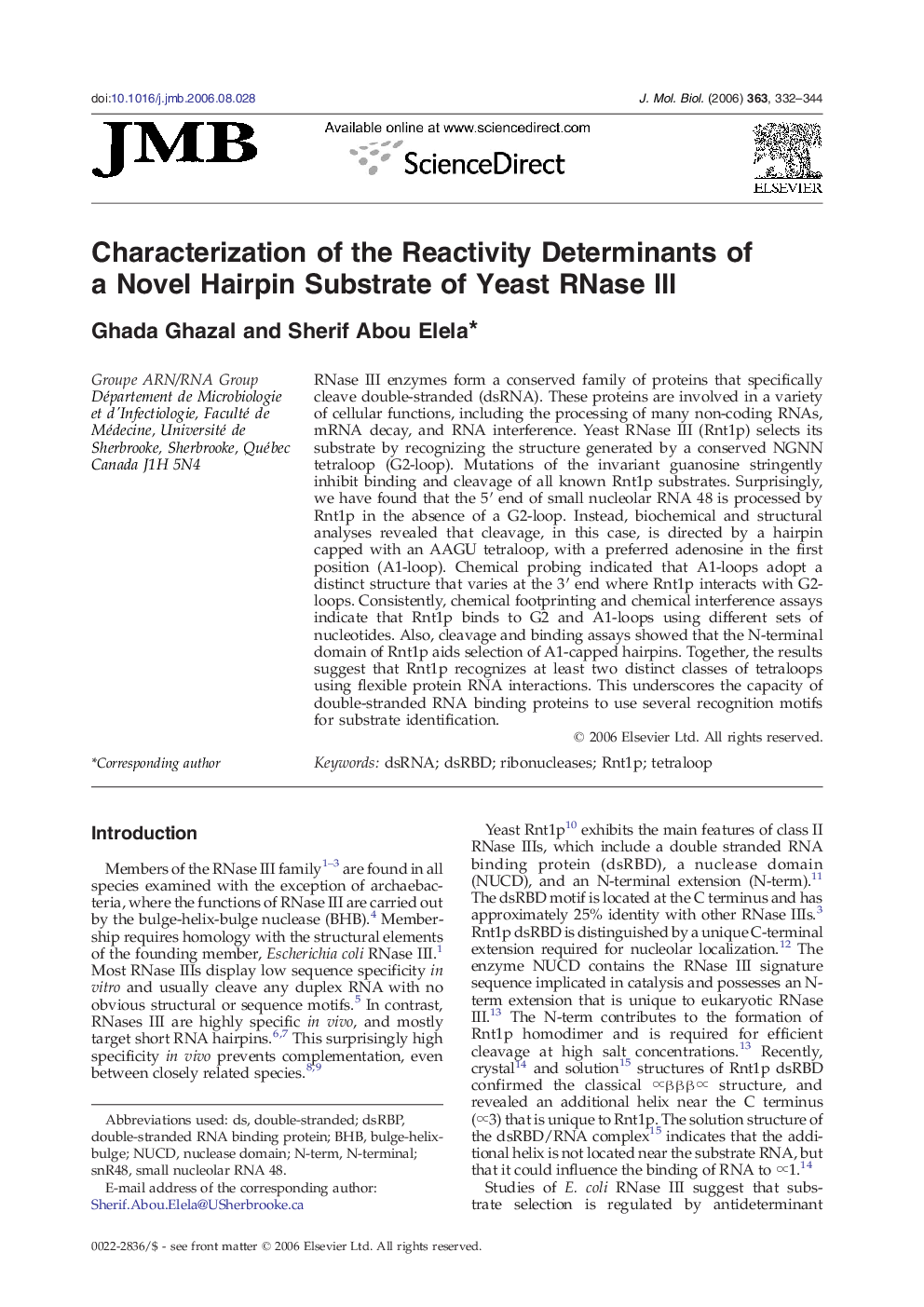| Article ID | Journal | Published Year | Pages | File Type |
|---|---|---|---|---|
| 2188884 | Journal of Molecular Biology | 2006 | 13 Pages |
RNase III enzymes form a conserved family of proteins that specifically cleave double-stranded (dsRNA). These proteins are involved in a variety of cellular functions, including the processing of many non-coding RNAs, mRNA decay, and RNA interference. Yeast RNase III (Rnt1p) selects its substrate by recognizing the structure generated by a conserved NGNN tetraloop (G2-loop). Mutations of the invariant guanosine stringently inhibit binding and cleavage of all known Rnt1p substrates. Surprisingly, we have found that the 5′ end of small nucleolar RNA 48 is processed by Rnt1p in the absence of a G2-loop. Instead, biochemical and structural analyses revealed that cleavage, in this case, is directed by a hairpin capped with an AAGU tetraloop, with a preferred adenosine in the first position (A1-loop). Chemical probing indicated that A1-loops adopt a distinct structure that varies at the 3′ end where Rnt1p interacts with G2-loops. Consistently, chemical footprinting and chemical interference assays indicate that Rnt1p binds to G2 and A1-loops using different sets of nucleotides. Also, cleavage and binding assays showed that the N-terminal domain of Rnt1p aids selection of A1-capped hairpins. Together, the results suggest that Rnt1p recognizes at least two distinct classes of tetraloops using flexible protein RNA interactions. This underscores the capacity of double-stranded RNA binding proteins to use several recognition motifs for substrate identification.
